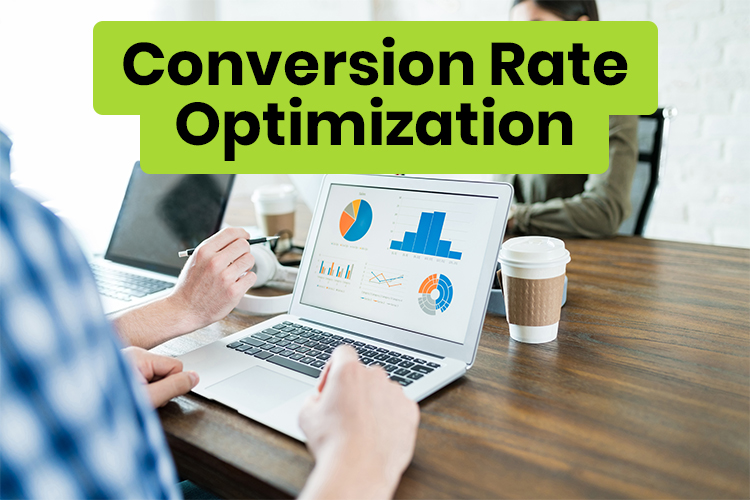Beginner’s Guide to Conversion Rate Optimization That Scales

In the world of digital marketing, attracting traffic to your website is only half the battle. The true challenge lies in converting that traffic into paying customers or engaged leads. This is where Conversion Rate Optimization (CRO) comes in—an essential strategy for businesses looking to maximize their online potential. Whether you run a small business or a large enterprise, improving your conversion rate is crucial to scaling your business without needing to invest heavily in acquiring more visitors.
But how do you approach CRO in a way that’s scalable and sustainable as your business grows? In this beginner’s guide, we’ll explore the fundamental principles of CRO and share actionable steps to help you optimize your website, drive conversions, and ensure long-term growth.
What is Conversion Rate Optimization (CRO)?
Conversion Rate Optimization (CRO) refers to the process of improving the percentage of visitors to your website who take a desired action—such as making a purchase, signing up for a newsletter, or filling out a contact form. At its core, CRO is about understanding how users interact with your site and using that data to make improvements that increase your conversion rate.
A good conversion rate isn’t a static number. It will vary depending on the type of business you run, your target audience, and the goals you have set. The key to effective CRO is using data-driven decisions to optimize elements of your website that contribute to higher conversions. In this way, CRO allows businesses to maximize their existing traffic, which is far more cost-effective than constantly driving new traffic to the site.
Why is CRO Important?
In today’s digital landscape, there’s a constant pressure to deliver more, faster, and more effectively. Many companies mistakenly believe that increasing their traffic will automatically lead to higher sales or conversions, but the truth is that increasing traffic alone is not a sustainable solution. While more visitors are always welcome, it’s the effectiveness of your website in converting those visitors that ultimately drives revenue.
Moreover, CRO is often more cost-effective than solely focusing on acquiring new traffic. For example, improving your conversion rate by just 1-2% could lead to a significant increase in revenue, without spending an extra dime on marketing. As you scale your business, this ability to leverage existing traffic will become an even more powerful tool for growth.
Step 1: Understand Your Current Conversion Rate
Before embarking on any optimization efforts, it’s important to understand where you stand. The first step is to determine your current conversion rate, which is calculated by dividing the number of conversions (desired actions taken) by the total number of visitors and multiplying by 100.
For example, if you had 1,000 visitors to your website and 50 conversions, your conversion rate would be:
Conversion Rate=(501000)×100=5%\text{Conversion Rate} = \left(\frac{50}{1000}\right) \times 100 = 5\%
Once you know your current conversion rate, set benchmarks for where you want to be. This could be based on industry standards, competitor performance, or your own historical data. The goal is to continually improve on this figure.
Step 2: Identify and Analyze User Behavior
To improve your conversion rate, you need to understand how users are currently interacting with your website. Tools like Google Analytics, Hotjar, and Crazy Egg can provide valuable insights into user behavior, including where visitors are clicking, how long they stay on specific pages, and where they drop off in the conversion funnel.
By analyzing user behavior, you can identify pain points—areas of your site where users are getting stuck or leaving without converting. Common issues include:
-
Slow-loading pages
-
Complicated navigation
-
Confusing checkout processes
-
Unclear calls to action
Once you’ve identified these issues, you can prioritize changes that will have the most significant impact on your conversion rate.
Step 3: Optimize Your Landing Pages
Landing pages play a crucial role in CRO, as they are often the first point of contact for visitors arriving from paid ads, email campaigns, or social media. If your landing page is poorly designed or fails to clearly convey the value proposition, it’s unlikely that visitors will convert.
To optimize your landing pages for conversions:
-
Ensure clarity and relevance: The content on your landing page should be directly relevant to the ad or link that brought the visitor there. Avoid confusion by ensuring that your messaging is clear, concise, and compelling.
-
Simplify your design: A cluttered landing page can overwhelm visitors and distract them from the desired action. Keep the layout clean and focused on the main call-to-action (CTA).
-
Use persuasive copy: Your copy should highlight the benefits of your product or service and address any potential objections visitors may have. Focus on how your product solves a problem or makes life easier for the customer.
-
Strong Call-to-Action (CTA): Your CTA should be prominent and clear, telling visitors exactly what action you want them to take. Use action-oriented language like “Get Started,” “Download Now,” or “Buy Today.”
By continuously testing different variations of your landing pages, you can determine which elements resonate most with your audience and drive the highest conversion rates.
Step 4: A/B Testing for Continuous Improvement
A/B testing (also known as split testing) is one of the most effective ways to improve conversion rates. It involves creating two versions of a page or element (e.g., a button color or headline) and comparing their performance to see which one yields better results.
Top-performing companies use A/B testing as an ongoing process. Here’s how you can implement A/B testing effectively:
-
Test one element at a time: This could be a headline, CTA button, form field length, or image placement. Testing multiple changes at once makes it difficult to pinpoint which element caused the change in performance.
-
Start with high-traffic pages: Focus on pages with the highest volume of visitors, such as your homepage, product pages, or checkout pages, where even small improvements can yield significant results.
-
Analyze and iterate: Use the results of each test to make informed decisions about your site. If one version outperforms the other, implement the winning element and test further improvements.
A/B testing is an invaluable tool for continuously improving your website and adapting to changing customer preferences.
Step 5: Focus on Mobile Optimization
With mobile internet usage continuing to rise, ensuring that your website is fully optimized for mobile devices is no longer optional. According to recent studies, over 50% of web traffic comes from mobile devices, and if your site isn’t mobile-friendly, you could be losing a substantial number of potential conversions.
To optimize for mobile:
-
Responsive design: Your website should automatically adjust to fit the screen size of the device, whether it’s a smartphone, tablet, or desktop.
-
Faster load times: Mobile users are often on the go and have less patience for slow-loading sites. Compress images, streamline code, and use caching to speed up mobile page load times.
-
Simplified navigation: Simplify menus and buttons for easier navigation on smaller screens. Consider using larger buttons and touch-friendly design elements.
A mobile-optimized site not only improves the user experience but also helps increase conversions from mobile users, a crucial audience for scaling your business.
Step 6: Improve Trust and Credibility
Online shoppers need to feel confident in their purchasing decisions, which is why trust and credibility are vital to boosting conversions. Top companies understand the importance of building trust with their audience, and there are several ways to achieve this:
-
Display security badges and certifications: Show that your website is secure with SSL certificates, payment security badges, and any relevant industry certifications.
-
Showcase customer testimonials and reviews: Positive reviews and testimonials can serve as social proof, reassuring visitors that your product or service is high-quality and trustworthy.
-
Clear return policies and guarantees: Clearly communicate your return, refund, or exchange policies to reduce any anxiety visitors may have about making a purchase.
By actively working to build trust, you can increase the likelihood of visitors converting into loyal customers.
Step 7: Monitor, Analyze, and Iterate
CRO is not a one-time process; it’s an ongoing strategy that requires constant monitoring and optimization. As your website evolves and as user behavior changes, your CRO efforts should also adapt. Keep a close eye on your conversion metrics and look for areas that still need improvement.
Using tools like Google Analytics, heatmaps, and user surveys, you can gain valuable insights into how visitors are interacting with your site. Use this data to identify new opportunities for optimization and continue testing, refining, and improving.
Conclusion: Scaling Your Conversion Rate Optimization
Conversion Rate Optimization is a fundamental part of growing your online business. By continuously optimizing your site’s user experience, testing elements, focusing on mobile optimization, and building trust, you’ll be able to scale your business without the need to rely solely on attracting new visitors. CRO is a scalable, cost-effective strategy that, when executed well, helps you turn your existing traffic into loyal customers, driving both growth and revenue for the long haul. Whether you’re just starting or looking to take your business to the next level, mastering CRO will unlock the full potential of your website.









